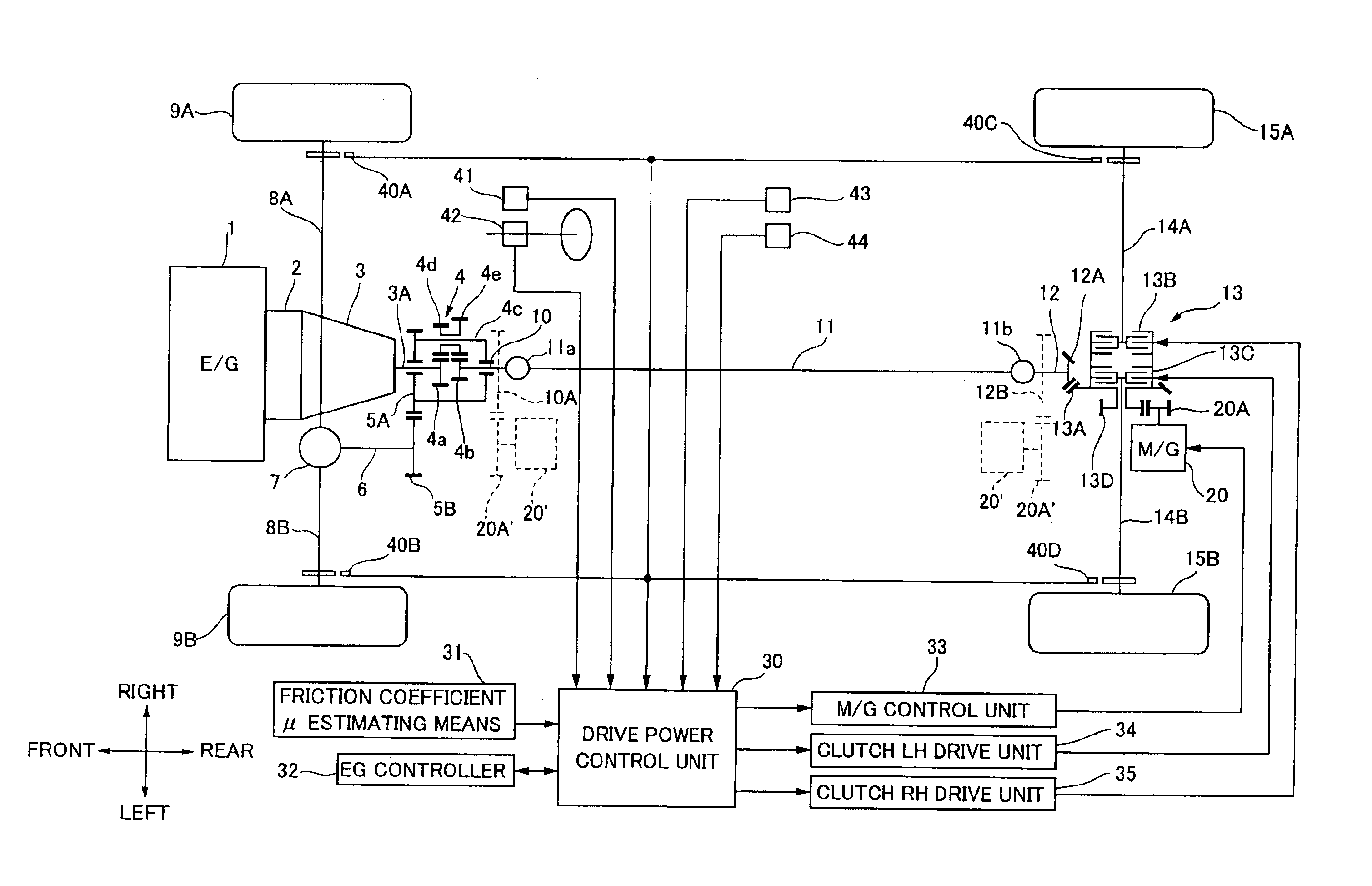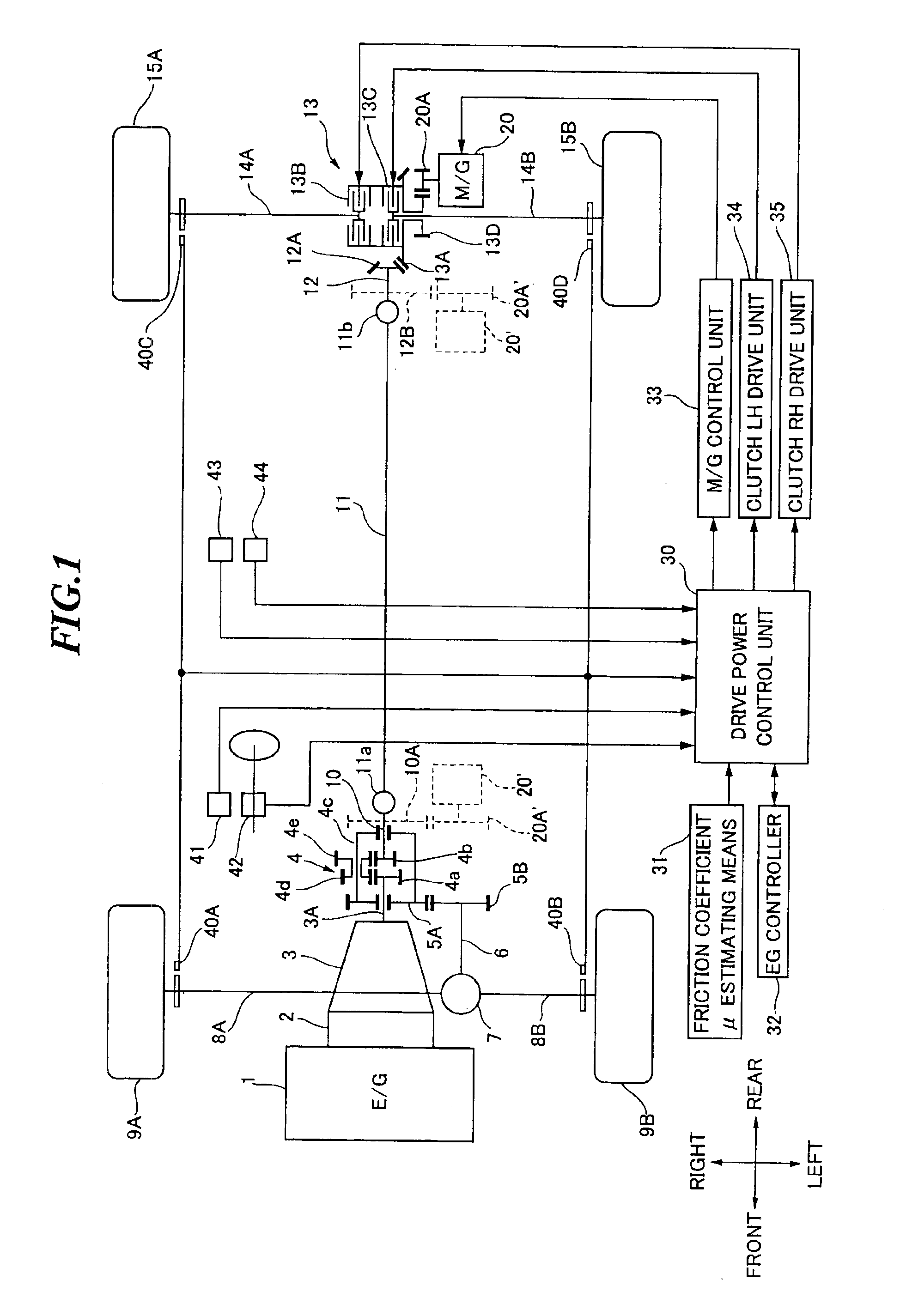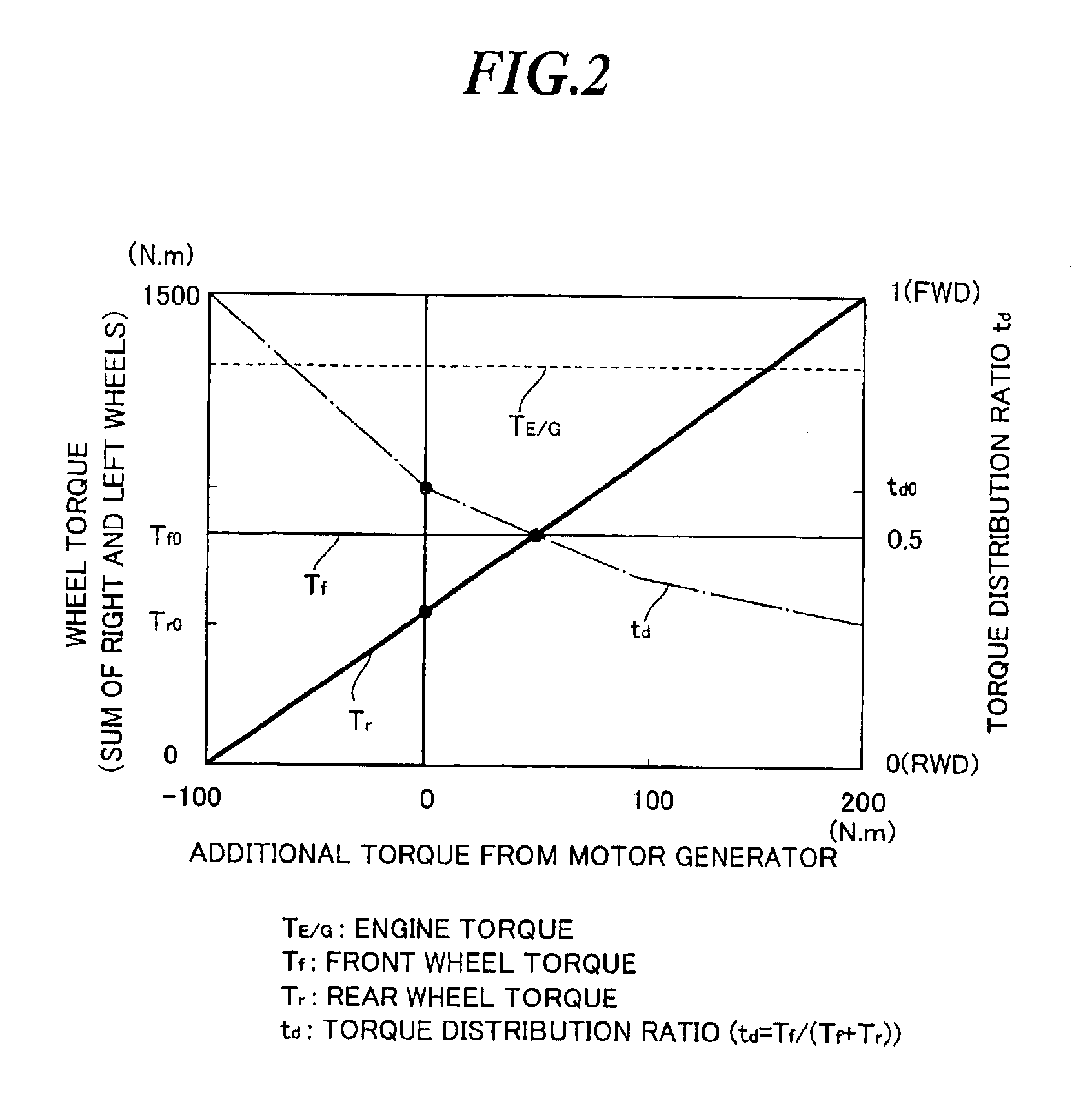Drive power controller for hybrid vehicle
a technology for hybrid vehicles and power controllers, which is applied in the direction of brake systems, instruments, and gearing, etc., can solve the problems of the differential function may be degraded with the change of the torque distribution ratio, and the inability to continuously vary etc., to achieve the effect of improving the running performance, easy control of the torque distribution ratio, and increasing the torque of the higher rotational speed
- Summary
- Abstract
- Description
- Claims
- Application Information
AI Technical Summary
Benefits of technology
Problems solved by technology
Method used
Image
Examples
first embodiment
[First Embodiment]
[0056]FIG. 1 is an explanatory view showing a system configuration according to a first embodiment.
[0057]Now, an explanation is given to the drive system of a vehicle, in which a power delivered from an engine 1 is supplied to a central differential 4 via an electromagnetic clutch 2 and a transmission 3. In the embodiment, the central differential 4 is a differential power transmission gear of a complex planetary gear train which includes a first sun gear 4a formed on a transmission output shaft 3A, a second sun gear 4b formed on a rear wheel drive shaft 10, and first and second pinions 4d and 4e held with a carrier 4c around the first and second sun gears 4a and 4b. The power supplied from the transmission output shaft 3A to the first sun gear 4a is transferred to the carrier 4c and the second sun gear 4b at a torque distribution ratio defined by gear dimensions of the aforementioned complex planetary gear train. The power is further transferred from the carrier 4...
second embodiment
[Second Embodiment]
[0089]FIG. 3 is an explanatory view showing a second embodiment according to the present invention. The embodiment uses the motor generator 20 coupled to the front wheel side drive system relative to the central differential 4. Additionally, the aforementioned twin clutch 13 is provided for the front right wheel drive shaft 8A and the front left wheel drive shaft 8B, while a rear wheel final reduction gear 16 is provided for the rear right wheel drive shaft 14A and the rear left wheel drive shaft 14B. The same components as those of the aforementioned first embodiment are indicated with the same symbols and will not be repeatedly explained.
[0090]In the second embodiment, the torque distribution ratio Tf0: Tr0 defined by the central differential 4 is set at that for the rear wheels being made too much thereof or for the rear wheels being provided a higher torque, e.g., front wheel ratio:rear wheel ratio=4:6. The additional torque from the motor generator 20 coupled...
PUM
 Login to View More
Login to View More Abstract
Description
Claims
Application Information
 Login to View More
Login to View More - R&D
- Intellectual Property
- Life Sciences
- Materials
- Tech Scout
- Unparalleled Data Quality
- Higher Quality Content
- 60% Fewer Hallucinations
Browse by: Latest US Patents, China's latest patents, Technical Efficacy Thesaurus, Application Domain, Technology Topic, Popular Technical Reports.
© 2025 PatSnap. All rights reserved.Legal|Privacy policy|Modern Slavery Act Transparency Statement|Sitemap|About US| Contact US: help@patsnap.com



